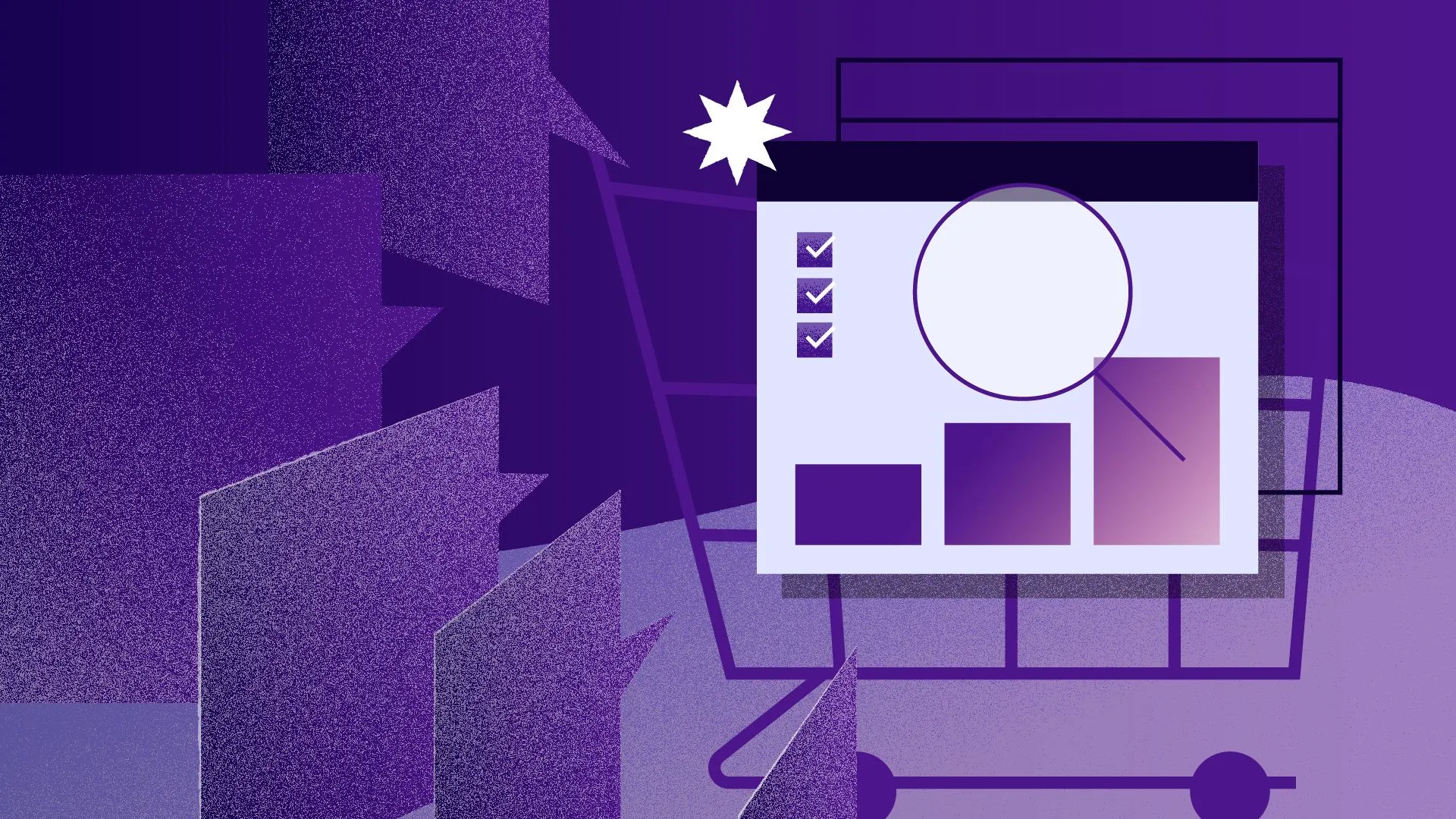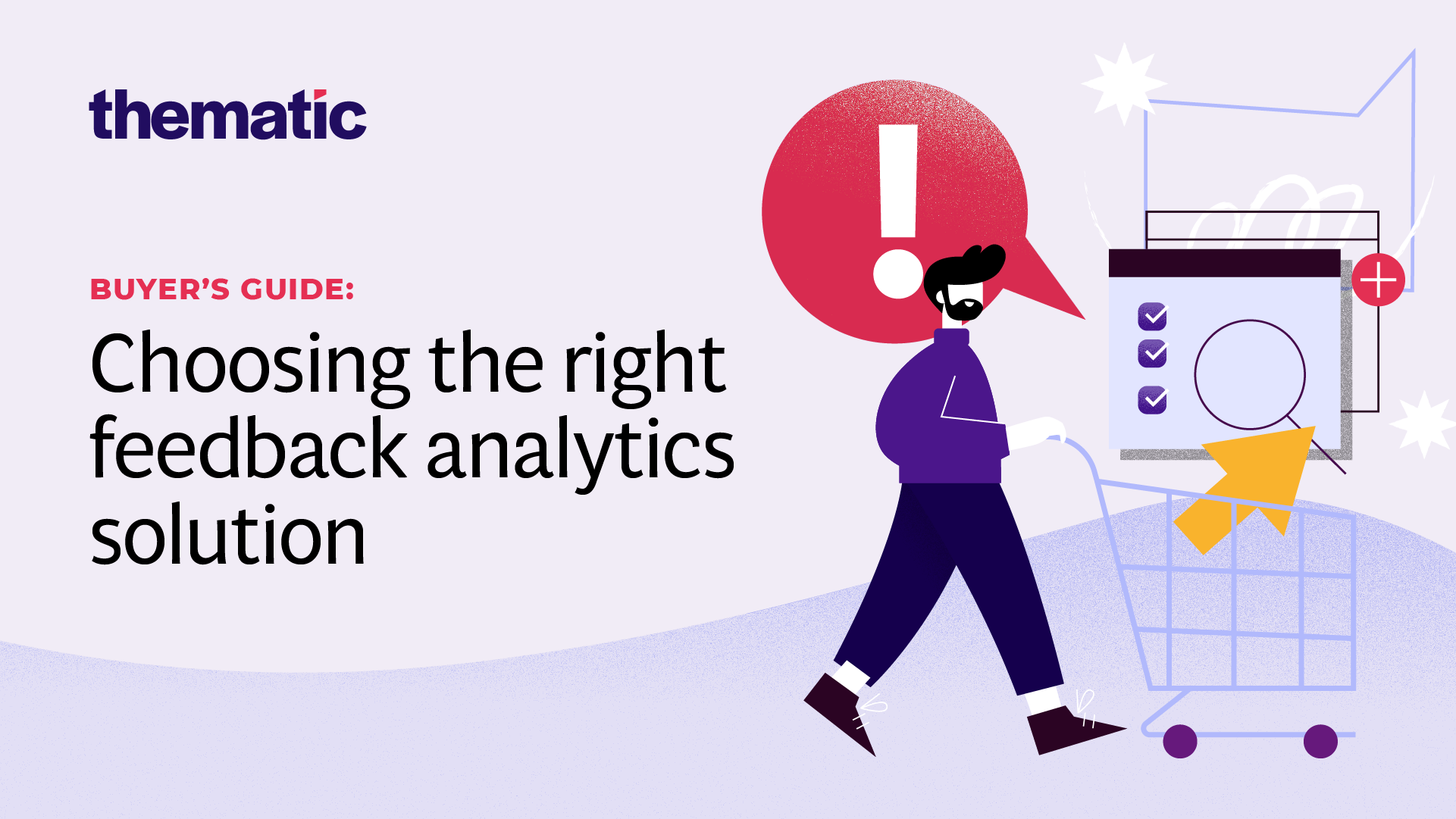
Feedback analysis is a deceivingly hard problem to solve, and very few solutions are truly great. In this guide, we’ll help you differentiate those who over-promise from those who actually deliver.

Are you trying to find a great feedback analysis software solution?
You might be feeling overwhelmed by the huge number of options. Whether it’s a DIY tool, a customer feedback management solution, or a text analytics provider, they all claim that customer feedback analysis is easy. After all, there's no shortage of data!
But when you dig deeper, you're likely to be disappointed. Why? Feedback analysis is a deceivingly hard problem to solve, and very few solutions are truly great. In this guide, we’ll help you differentiate those who over-promise from those who actually deliver.
So much is in flux right now, and keeping track of customer needs is more important than ever. Thankfully, customers tell companies what they do and don't like through many channels. They get in touch with the contact center or support when things don’t work. They leave reviews about brands online. They reply to surveys. They chat on social media.
This feedback is a goldmine of insights into what drives key business metrics such as spend, adoption, churn and loyalty. These insights are crucial for improving customer and product experience.
Historically, customer feedback management solutions have been notoriously bad at strategic analysis of feedback data. The majority don't offer much more than numbers on dashboards and possibly word clouds from survey responses.
As a result, decisions get made based on partial and often incorrect information, anecdotes and gut instincts. Critical customers needs are undiagnosed and ignored, and product opportunities are missed.
So, how can you prevent poor decision making from happening?
How can you help your product team have the right data at the right time, in an easily understandable format?
Whether you are going for an all-in-one or a best-in-class solution, you need to be clear about what potential providers can provide, and what your dealbreakers are.
We have put together the following eight questions to help you evaluate potential feedback analysis solutions. These are only some of the important things to consider - for the full list, download our free Buyer's Guide!
Ideally, your provider will support ALL feedback sources. This includes internal sources: surveys, contact center logs, support tickets, complaints, and CRM notes. And external sources: online reviews, social media, forums, and Slack communities.
When you limit yourself to just one source of feedback, e.g. surveys, you'll only see feedback from the customer segments likely to use that source and the context they provide. You lose the full picture of your customer's experience.
Your ideal solution will have custom cleaning tools that filter out non-feedback text, such as irrelevant chatter, or social media posts that mention your company but don't include feedback.
Depending on the source, feedback can be mixed up with other text. For example, a live chat conversation lists not only problems, but also greetings, discussions and solutions. These need to be filtered out of the analysis, and many DIY solutions simply can't do this.
You want to find feedback analysis software that creates a taxonomy of themes closely tailored to your company. This taxonomy needs to evolve all the time as new themes emerge in feedback.
Long lists of themes will quickly become unmanageable, so they need to be organized into a taxonomy of base and sub-themes.
Themes need to be specific to the things your customers are saying, instead of generic or industry-wide. Every company and the issues its customers have are unique. This is especially pronounced in technology companies and those going through digital transformation.
Make sure you can bring your domain expertise into the way theming is done. You should be able to continuously reorganize the taxonomy with ease.
Nobody knows your company, and your product, as well as you do. What matters changes over time. The analysis should be flexible and adaptable so the insights you get are as useful and as accurate as possible.
You want to find feedback analysis software that can easily slice and dice the data. For example, you might want to select one or more filter values and combine two filters to create a customer segment.
This will help answer complex queries such as; “what do customers who have been with us for less than 3 months and who have purchased both product A and product B say about the integration we recently implemented between these products?”
Your ideal solution will have the inbuilt functionality to show you why the metric of your choice (NPS, CSAT, etc) has increased or decreased. This will make it easy to explain changes in score over time.
Solutions like PowerBI and Tableau make it easy to create custom reporting with any number of filters and widgets. But when it comes to feedback analysis software, widgets that uncover the “why” behind satisfaction or NPS metrics are the real money-maker. If you make sure your reports can easily refer to themes in qualitative data, it'll be easy for others in the company to truly understand and relate to feedback.
This functionality is incredibly valuable! You want a solution that can aggregate not just different scores into a single metric, but also different kinds of datasets: live chat, complaints vs. online reviews.
Having multiple different dashboards make it difficult to focus the company on what truly matters.

These are just eight of the things to consider when looking for feedback analysis software. Your requirements may differ depending on your industry, or the size of your company.
For a comprehensive list of elements to consider when assessing potential feedback analytics solutions, download our free guide. It comes with handy checklists to make things even easier!
All the best on your quest for actionable insights!
Join the newsletter to receive the latest updates in your inbox.